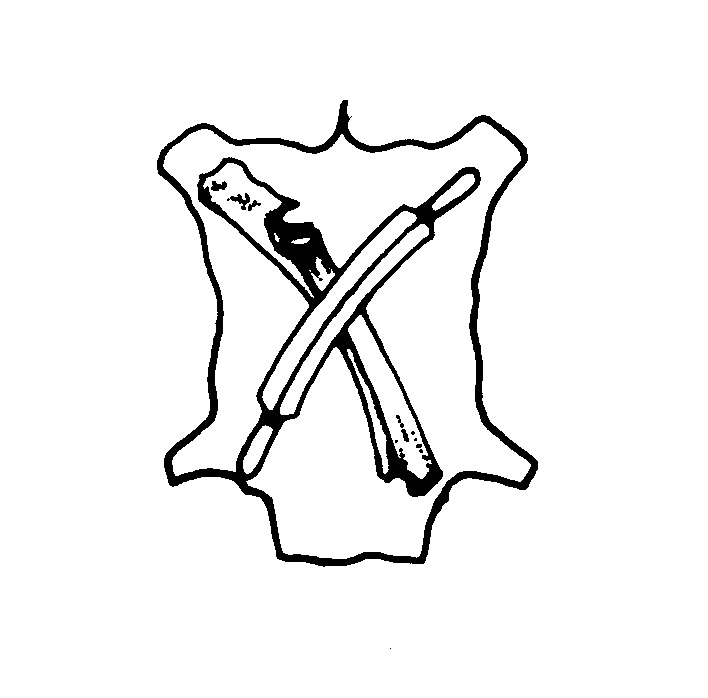Paleotechnics' Educational Displays
displayed regularly at classes and events or created for use in classrooms
photos of some of these displays are available for sale
Museum Exhibits
GAMES OF SKILL, POWER & CHANCE IN NATIVE CALIFORNIA
August 14 - November 7, 2004
at the Grace Hudson Museum in Ukiah, CA
www.gracehudsonmuseum.org
Tamara Wilder made the hoop & pole games, acorn tops, buzzers,
and cordage for the cat's cradle string games on display in this exhibit.
This exhibit was curated by Keith White Wolf James.
“Bark House”
Dogbane string made by Tamara Wilder
String figure made by Rachael Smith-Ferri
Three styles of
hoop & pole game
(top to bottom):
Sierra Miwuk-
1' hazel hoop wrapped with buckskin.
5' hazel pole.
Northern Pomo-
16" hazel hoop wrapped with dogbane string.
9' forked hazel pole.
Nishinam (Mokelumne River)-
24" hazel hoop wrapped with rawhide with ten radii of rawhide to center hoop of rawhide.
9' chokecherry pole or lance.
Acorn tops with
sticks of Chamise wood
Balanced acorns must be used to make tops that will spin
properly.
A Passion For
Plants & Place
Carl Purdy of Mendocino County
Mountain Mahogany digging stick
by Steven Edholm
THE NATIVE VOICES... Honoring the Animals
at the Maidu Interpretive Center in Roseville, CA
Salmon vertebrae and bone pin catch game."
by Tamara Wilder
String is made of deer sinew with a tuft of deer hair
on the end of the string.
Bone pin is held in hand and vertebrae are swung into air
and then caught by the pin.
This game requires quite a bit of skill.
Sample of Woven Rabbit Skin Blanket
by Tamara Wilder
Rabbitskins are twisted into furry ropes and then "woven" together by twining with milkweed string. Blankets such as these are incredibly warm and traditonally composed a major part of winter clothing for many California Indian tribal groups.
Gifts from the Deer Exhibit
Design & materials by Tamara Wilder.
Exhibit conceived and installed by Chuck Kritzon.
1) Maidu Arrow replicated by Steve Allely
2) Hide glue made from gelatin by boiling deer skin
3) Rendered deer fat (tallow)
4) Rear leg Sinew
5) Toothed flesher from rear leg cannon bone
6) Deer toe bones (phalanges)
7) Whole rear lower leg (hock)
8) Skinned rear lower leg
9) Astragalus bone
10) Deer jerky (dried meat)
11) Deer tail
12) Backstrap sinew, for hafting arrow & sewing thread
13) Antler chisel
14) Antler baton for flintknapping by percussion
15) Rib bone
16) Shoulder blade
17) Ulna-radius bone
18) Front leg cannon bone
19) Awl from front cannon bone
20) Deer hoof rattle
21) Hairpin made from front cannon bone
22) Skinned front lower leg
23) Whole front lower leg
24) Front leg sinew
25) Flattened dried hock skin
26) Hand game made from cannon bones
27) Bone gorge hook with dogbane string
28) Hooves
29) Dew Claws
30) Needle bones
31) Ulna bone awl
32) Ulna bone
33) Ulna and radius bone hide scraper
34) Shoulder blade saw
35) Jaw bone(hock)
36) Antler tine for flaking stone arrowheads
37) Split antler pressure flaker for flaking stone arrowheads
38) Deer antler
39) Sinew backed bow
40) Deer brains dried in doughnut of usnea lichen
41) Leg sinew halfway shredded to show fibers
42) Bundle of shredded leg sinew
43) Sinew bowstring made of shredded leg sinew
44) Samples of hide at different stages of the braintanning process
45) Dried raw skin. Hair on rawhide
46) Scraped rawhide. The hair and upper grain layer have been removed
47) Softened white buckskin
48) Smoked buckskin
49) Deerskin braintanned with the hair on
50) Piece of backstrap sinew
51) Backstrap sinew spun up into a sewing thread for sewing holes in buckskin.
Western Plateau envelope
Replication by Steven Edholm & Tamara Wilder of original made circa 1870, as pictured on page 230 in the book The American Indian Parfleche: A Tradition in Abstract Painting by Gaylord Torrence.
(collected by E.C. Miller on the Yakima Reservation in WA 1913.)
Museum
of
Natural History
PARFLECHE EXHIBIT
at the University of Oregon in Eugene, OR in 1999
Parfleche comes from French and can be literally translated as "against arrow". It probably gained this name from rawhide armor used by many Plains Indian tribes. It is now applied to the many styles of containers which are
made of painted and often softened rawhide.
This replication was made by Steven & Tamara in 1999 and supplied to the exhibit so that it could be handled by visitors for a tactile experience.
Made of elk hide and painted with natural earth pigments except for the blue which is an unknown trade pigment.
These pictures show the process of making a parfleche.































